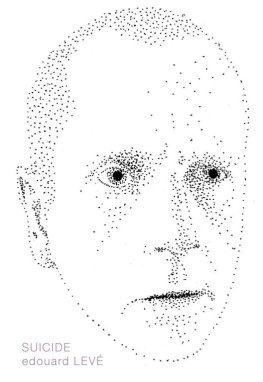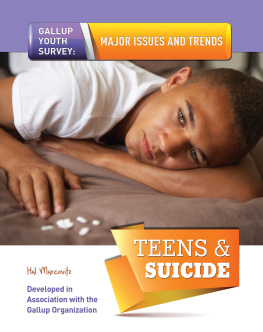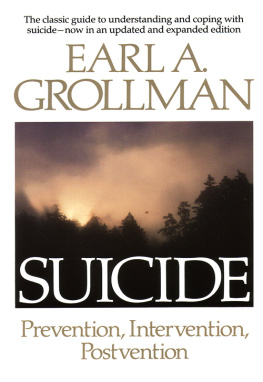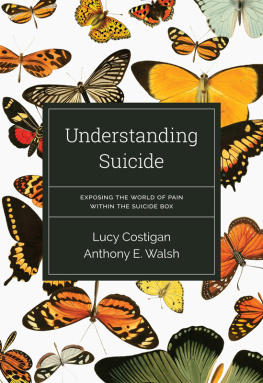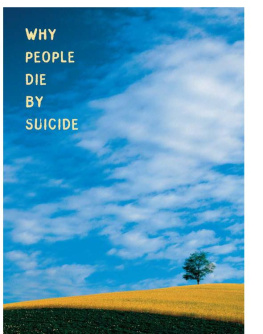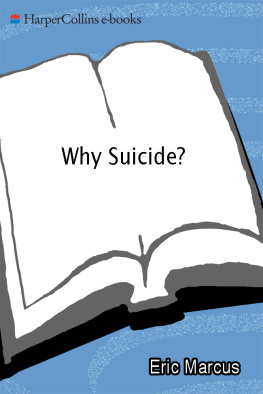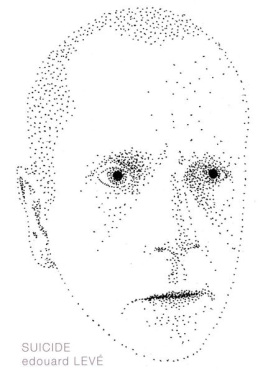The SUICIDE
SOLUTION
Understanding and Dealing with Suicide from Inside the Mind of Someone Whos Been There
Frank Selden

Copyright 2016 Frank Selden.
All rights reserved. No part of this book may be used or reproduced by any means, graphic, electronic, or mechanical, including photocopying, recording, taping or by any information storage retrieval system without the written permission of the author except in the case of brief quotations embodied in critical articles and reviews.
Archway Publishing
1663 Liberty Drive
Bloomington, IN 47403
www.archwaypublishing.com
1 (888) 242-5904
Because of the dynamic nature of the Internet, any web addresses or links contained in this book may have changed since publication and may no longer be valid. The views expressed in this work are solely those of the author and do not necessarily reflect the views of the publisher, and the publisher hereby disclaims any responsibility for them.
Any people depicted in stock imagery provided by Thinkstock are models, and such images are being used for illustrative purposes only.
Certain stock imagery Thinkstock.
Scripture quotations taken from the New American Standard Bible,
Copyright 1960, 1962, 1963, 1968, 1971, 1972, 1973, 1975, 1977, 1995 by The Lockman Foundation. Used by permission. (www.Lockman.org)
ISBN: 978-1-4808-3857-4 (sc)
ISBN: 978-1-4808-3858-1 (hc)
ISBN: 978-1-4808-3859-8 (e)
Library of Congress Control Number: 2016917990
Archway Publishing rev. date: 12/13/2016
Contents
Now I lay me down to sl eep
I pray the Lord my soul to t ake
That I may die before I w ake
And safely enter Heavens Keep
My nightly prayer for over two y ears
In memory of T, a good friend I couldn't save,
and
In honor of you who, contemplating death, find the courage to live the lives you des erve.
Recent statistics on suicide report that approximately eighty-six people in the US commit suicide every day. That number includes twenty-two soldiers, a term meaning current and former members of all branches of the military. Lowering that statistic requires a change in the way we think and talk about suicide. While I hope this book is part of the changing dialogue, my goal is not primarily to influence national statistics. I want to influence livespeople I care about but cannot reach personally.
You are someone I want to reach. Thank you for reading this book.
If you are buying this book to give to someone, with the hope it might talk him or her out of committing suicide, I want you to reconsider. If you truly want to help, understanding why suicide looks attractive to the person will work better than handing over a book you hope will fix things. Please read this book for yourself first; it will help you gain that understanding and provide tools for creating tenable solutions. Then offer to help the person create solutions he or she can believe in. This book is not, by itself, that alternative. It merely points the way. The best thing you can do for your loved one is read it for yourself, and then walk next to him or her. You will know when the time is right to share this book.
If you are reading this book because, like me, you have attempted or contemplated suicide, welcome. All your feelingsespecially the dark onesare accepted here. This book is not an attempt to talk you out of suicide. Suicide is a solution for some, and I am not sitting in judgment of whether or not suicide is the solution for you. My suicide attempts involved frustration with chronic pain, feelings of desperation and guilt, judgment that my life only amounted to failure, and hardwired emotional and cognitive processing that reminded me on a daily basis that I am different from most people.
Do not stop reading after the first section. If you start this book, please finish it , and then examine your life again in light of what you learn about yourself. While reading this bookhowever long it takesI invite you to respond to thoughts of suicide with I hear your concern. Lets come up with a different solution for now and revisit suicide after finishing this book.
This book consists of three distinct parts:
Part 1 addresses the benefits of suicide itself and what suicide solves.
Part 2 addresses the damage done by suicide.
Part 3 offers solutions to the problems created by taking ones life.
These topics are addressed from the personal, community, and national perspectives. The term national takes into account the ways in which we organize ourselves: political states and nations, religious or ethnic communities, or other ways we identify on group levels.
Some people believe that there are no benefits to suicide. I disagree. Suicidal people see benefits, or they wouldnt consider the option. A group leader at the VA Pain Clinic posed the question, What benefits do you receive from your pain? Many of us attending responded that pain has no benefits. The doctor challenged us to examine our lives and be honest with ourselves and each other. One by one, we started to share benefits: an easy out for chores we didnt want to do, time to ourselves when we wanted it, or helping us distinguish what is truly important.
I firmly believe that suicide, like pain, can benefit us individually, as a family or community, and as a state or nation. An honest discussion of suicide needs to include seeing the benefits. Otherwise we will not be able to communicate with those contemplating suicide. Trust me, when I made plans to end my life, I focused on the benefits. If someone wanted to talk me out of finalizing a suicide plan but was not willing to engage in an honest discussion of benefits as I saw themmaking blanket statements such as There is nothing to gain the conversation ended immediately.
Some of the benefits may be hard to accept. We may need to face realities about ourselves, personal communities, and public societies we want to ignore or gloss over or characterize as something more acceptable.
It was not enough for me to make a commitment not to end my life. I made such a commitment after one attempt, but, in the emotional distress leading up to the next, the commitment meant nothing to me other than one more expectation I would fail to fulfill. Now, I want to give people a reason to live.
The world needs you more than ever. I need you. That may be hard to accept, given that I dont even know you. But I hope you will understand my meaning by the end of the book.
Frank Se lden
Seattle, August, 2016
PART 1
SUICIDES
BENEFITS
CHAPTER 1
PERSONAL BENEFITS
Thus, I am left with basically nothing. Too trapped in a war to be at peace, too damaged to be at war. Abandoned by those who would take the easy route, and a liability to those who stick it out and thus deserve better. So you see, not only am I better off dead, but the world is better without me i n it
This is what brought me to my actual final mission. Not suicide, but a mercy killing. I know how to kill, and I know how to do it so that there is no pain whatsoever. It was quick, and I did not suffer. And above all, now I am free. I feel no more pain. I have no more nightmares or flashbacks or hallucinations. I am no longer constantly depressed or afraid or wor ried
I am fr ee.
Portion of a suicide note by soldier Daniel Somers
Lets begin by looking inside the thoughts of those who believe that suicide is the best solution to all their problems.
If youve never been suicidal, its difficult to imagine how suicide can seem a viable and ethical solution. Perhaps you judge suicidals as selfish, simply not seeing things clearly, or out of their minds. This is a disservice to those who are in such a desperate situation. In my case, I saw things clearly. I was not out of my mind, and I immediately dismissed anyone who approached me that way.
Next page

